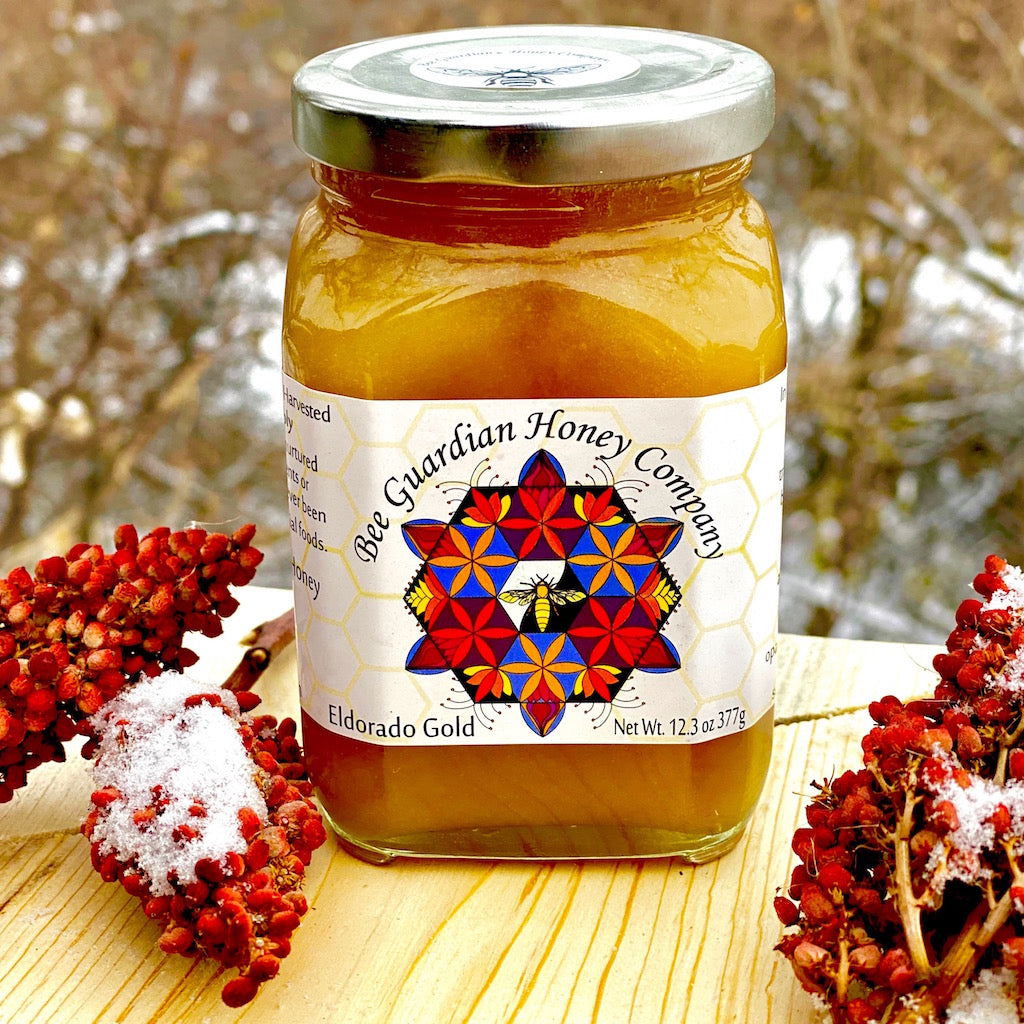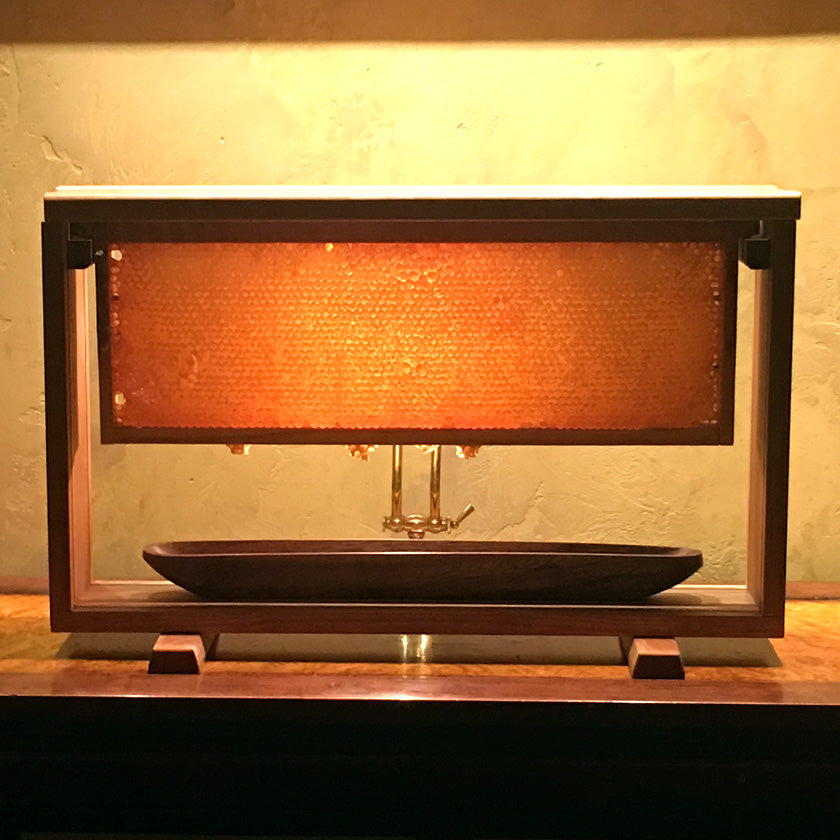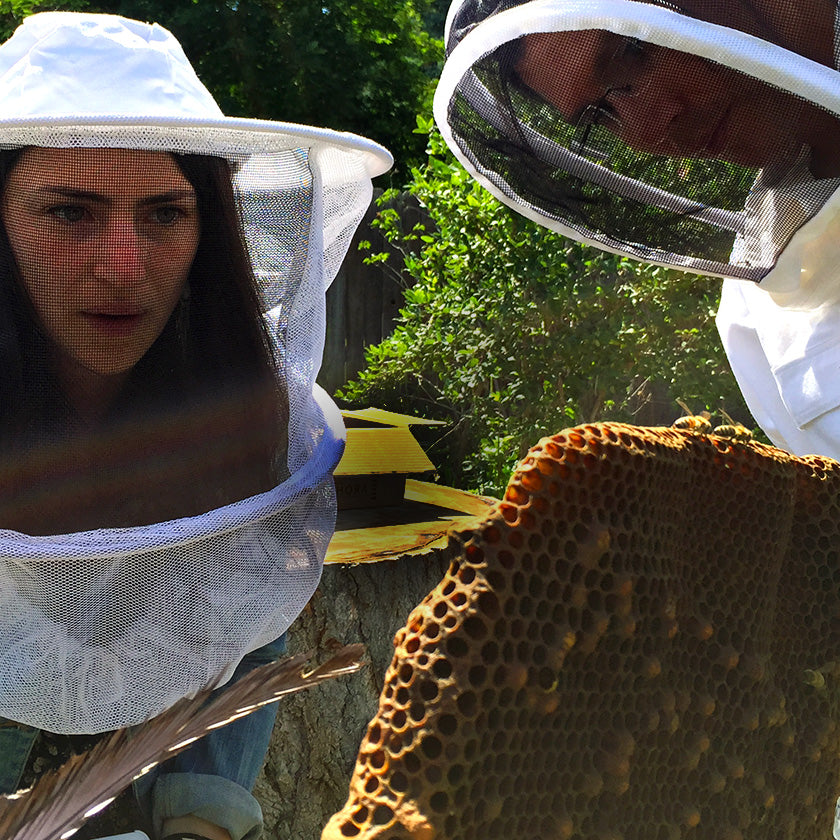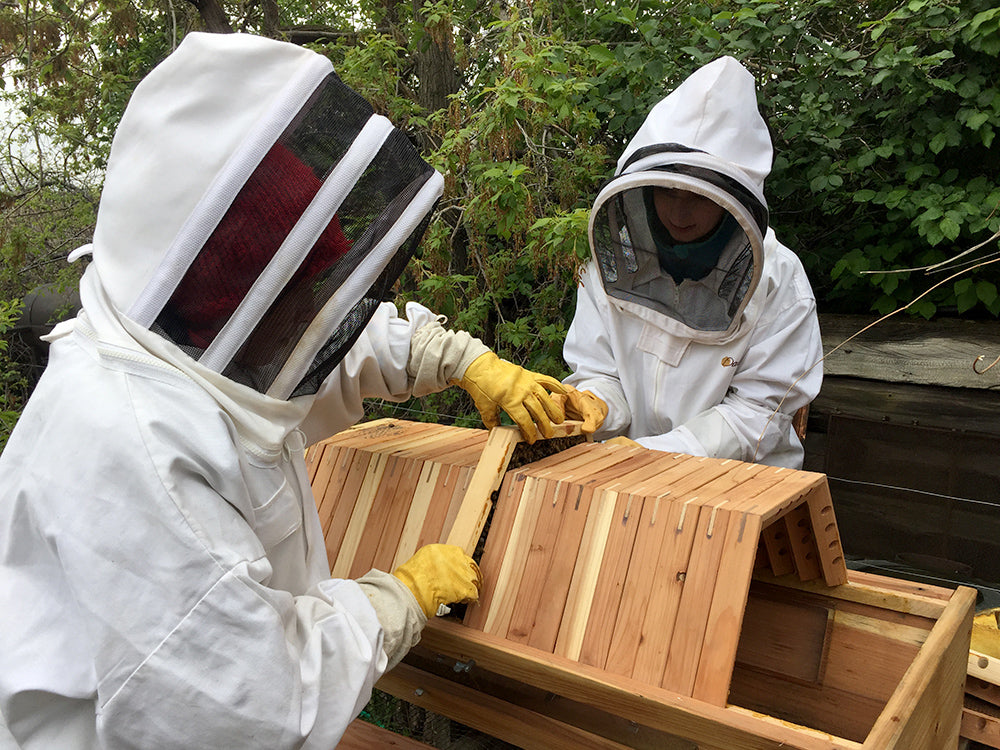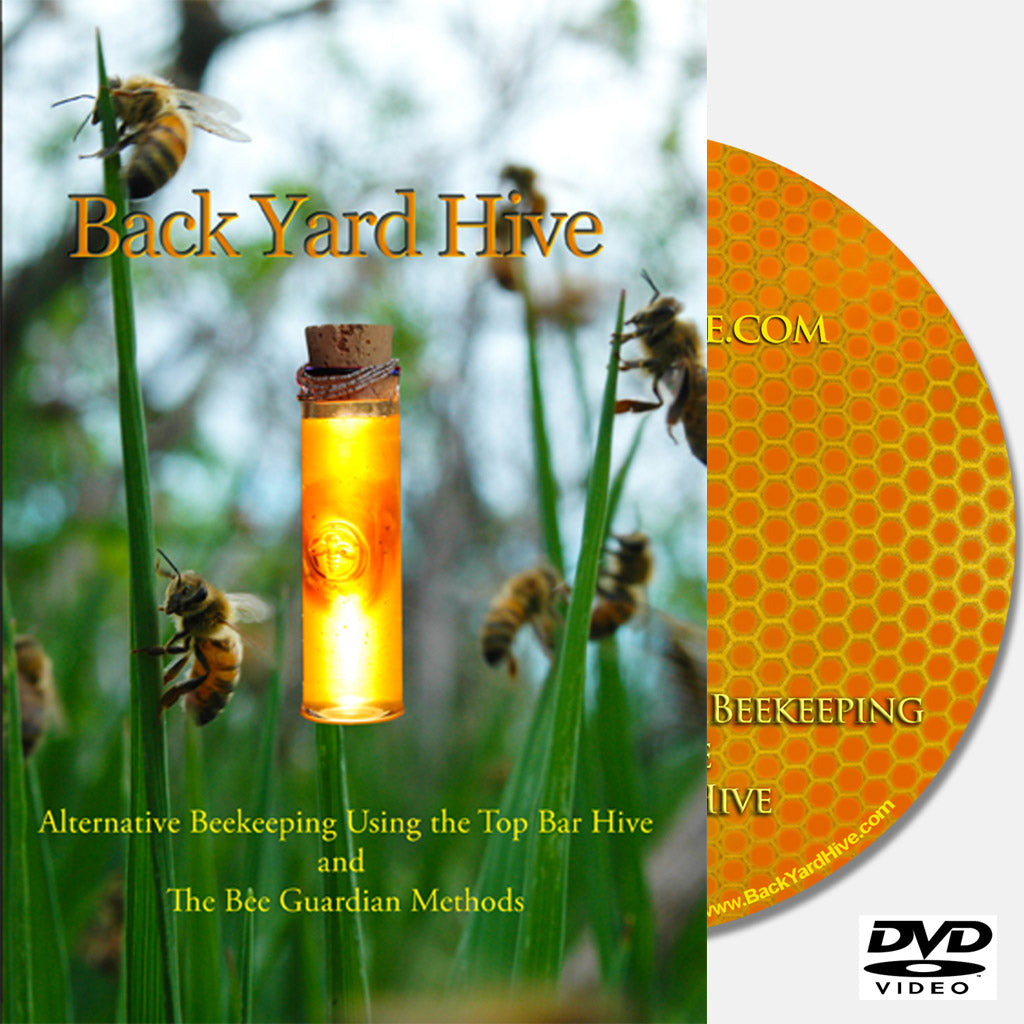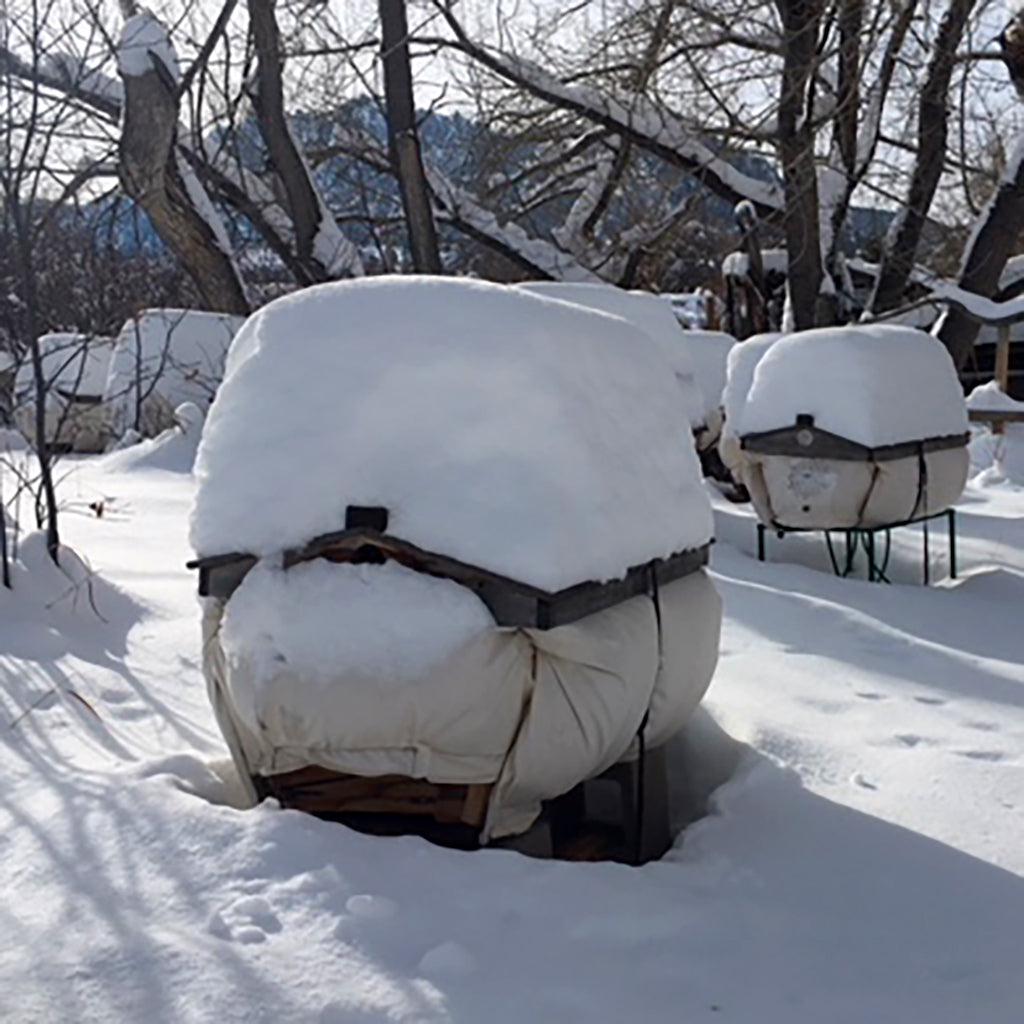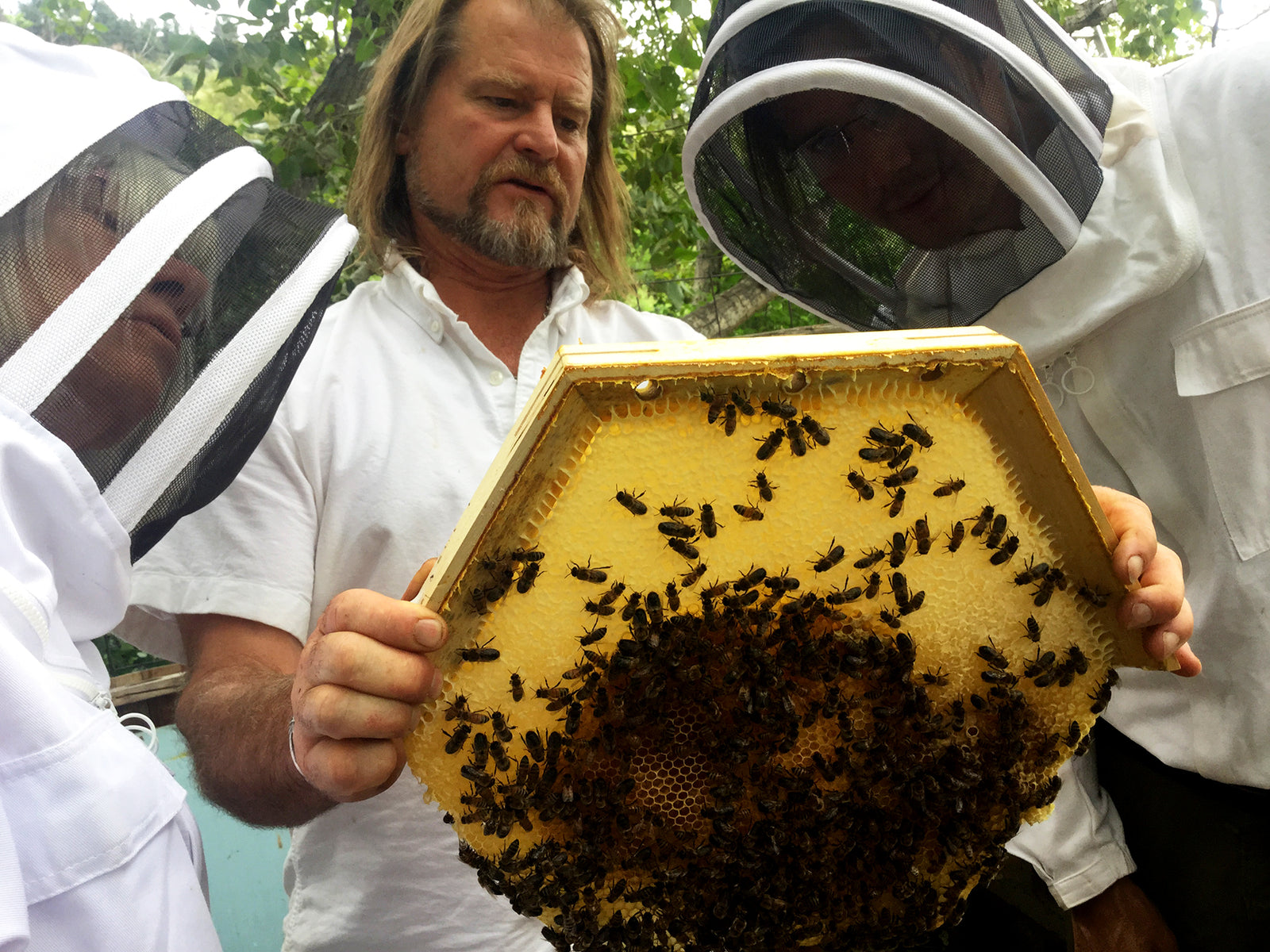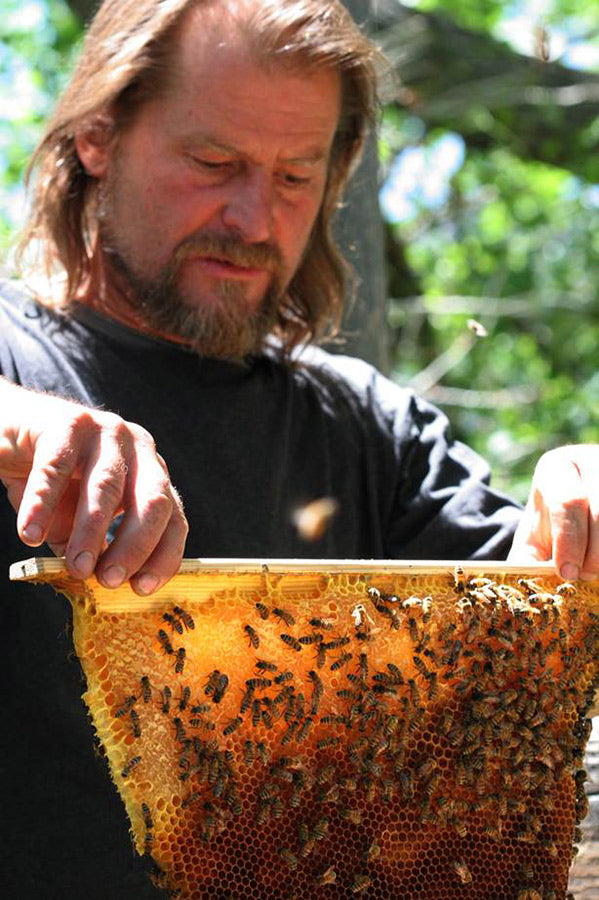Bee Class starts at 10:00 on Saturday morning. At 10:01, Caren announces that her hive is swarming again. We have gathered at this farm in Paonia from as far away as Salt Lake City to learn how to be bee guardians. A swarm is a bonus none of us could have anticipated.
Bee guardian and farm owner Caren Vongontard has hosted this workshop, offered by the Soil Academy in Paonia, for the past three springs, with bee charmer Corwin Bell and his team from Back Yard Hive in Boulder. The night before class, Bell gave an introduction to his pioneering philosophy of bee guardianship.
“A bee colony’s immune system is its ability to react and adapt to its bioregion, and to pass that knowing on,” he says, his gestures as graceful and expressive as a bee’s dance. Bell began collecting “feral” bee swarms on the Front Range fifteen years ago, and housing them in top bar hives of his own design. Through workshops, and selling both architectural-quality plans and hives, Bell has fostered honeybee colonies up and down the Front Range, in the North Fork, and in other communities across the state and around the world.
Bell points out that honeybees in their capacity as pollinators are critically important to the survival of the human species, and he believes that we can help them survive and thrive by offering them safe haven in our own back yards.
It’s easy to think of an aspen grove as a super-organism, because underground all the trunks are connected through the root system. Bell describes the super-organism of bees as something larger even than a single hive. Not only are the honeybees of a given hive connected by something intangible, but by periodically throwing off swarms, and moving to a new hive when they become honey-locked, bees of an entire region are linked by common knowledge and genetics in a single super-organism. By the end of the evening’s presentation I am completely enchanted with both honeybees and Corwin Bell.
And so at 10:01 the next morning, our class of more than twenty troops up to the strawberry patch where Caren has two of her several hives in a juniper-post shade shelter. We watch enthralled as bees pour out of the narrow horizontal doorway at the bottom of one hive, filling the air, seeking the right place to cluster. “Maybe they’ll go here,” Caren says of a forsythia, then a few minutes later, “or maybe in this blue spruce.” A few minutes longer and the bees settle on two twigs of a chokecherry just ten feet from the hive, and a couple of feet off the ground. By 10:30 we are watching two clusters of calm bees, two feet apart in the same shrub, and wondering which to catch first.
A honeybee swarm is a wonder of nature. When a hive has more than enough bees, and a new queen has matured inside, the old queen leads most of the bees out to seek a new cavity in which to reproduce and live for a few more years. A hive can also swarm when it has filled its space to capacity with last year’s honey, or become honey-locked, and the bees leave en masse to start a new hive. By swarming, the bee super-organism extends tendrils out into its environment, increasing both its population and the successful pollination of uncountable species of plants over a wide area. In an agricultural setting this is an extraordinarily valuable effect for humans.
Bee guardians aim to provide a safe haven in a world increasingly hostile to honeybees. The top bar style of backyard hive requires little maintenance from the bee guardian, and with minimal interference the bee colony is enabled to thrive as it has adapted over around 25 million years to do, in balance with its surroundings.
As with so many human endeavors that profit from the mass production of animal species, the bees, the environment, and ultimately human beings suffer from over-commercialization of honeybees. A complex interplay of factors, including (but not limited to) pesticides, mite infestation, and flattening of genetics, has critically imperiled the global honeybee super-organism. Full on collapse of honeybees worldwide would interrupt pollination of many plants that humans depend upon to survive. Think about that.
Virtually every plant we eat or use for feed or fiber requires pollination by some kind of insect, bird, or mammal. Bees of many species make up a huge percentage of pollinators. The bee guardian philosophy differs from commercial beekeeping in that its goal is to support bees in their wild, unfathomable complexity, and maybe gain a few jars of honey on the side, rather than to profit by their exploitation. It views honey as a valuable gift rather than as a commodity, and seeks to protect habitat and hive both for their own sake and as integral infrastructure in our human lives.
To this end, Corwin Bell is single-handedly saving bees around the world with his compelling fusion of science and love. He has consulted on bee colonies from Scandinavia to Hawaii, and his patient observations and astute interpretations of bee behavior are breaking ground in the global effort to save the honeybee. His enthusiasm is as contagious as a revival preacher’s.
At 10:30, we watch and assist as he clips twigs that extend from the smallest swarm on the shrub, then gently, gracefully, lowers the swarm into a prepared “fetcher” box, gives it a swift shake, and carefully closes in the barely disturbed cluster. As the bees settle down, he encourages us to cup our hands, one at a time, under the swarm that remains on the bush. The soft brush of bee hair and beating wings tickles my palm as I feel the heat generated in this docile, humming, living ball.
Read Full Article




